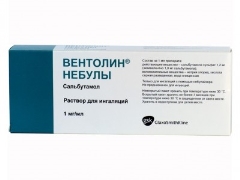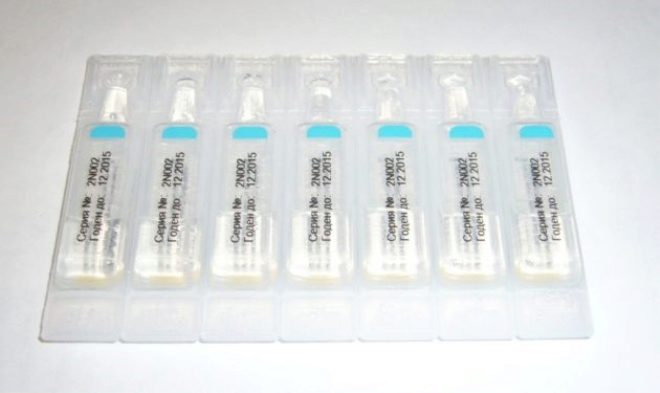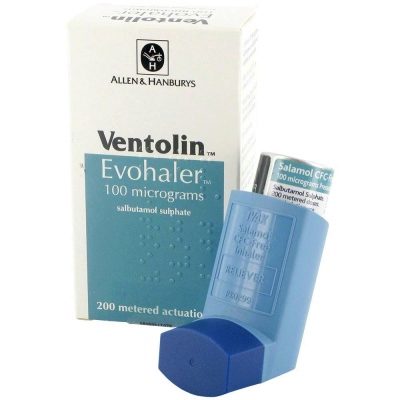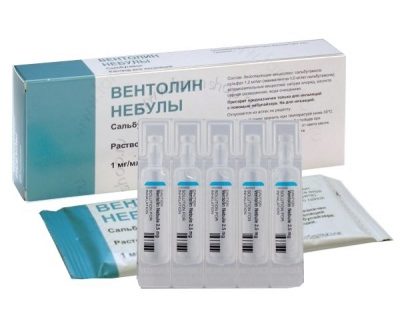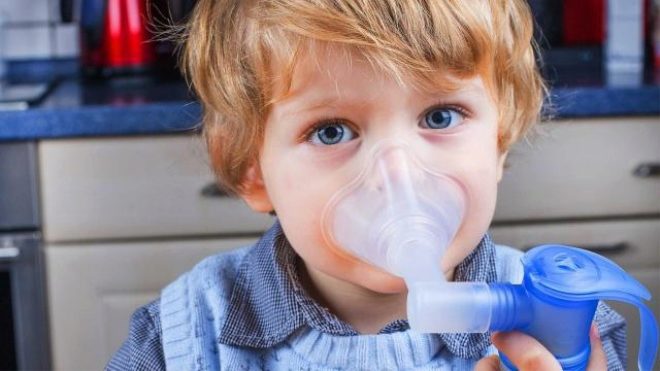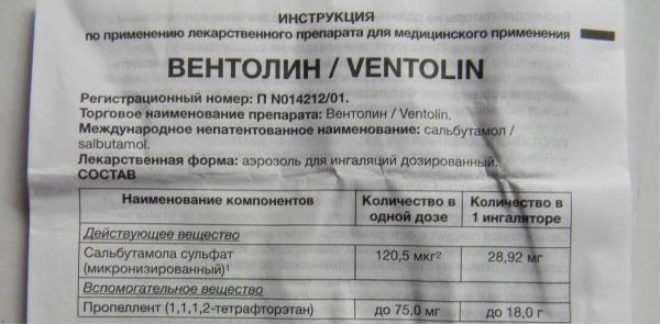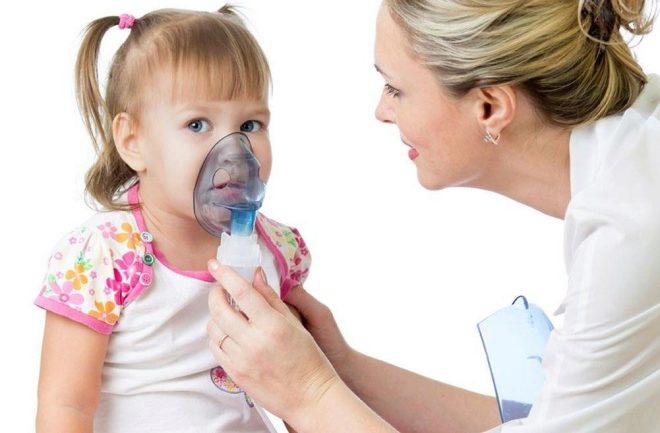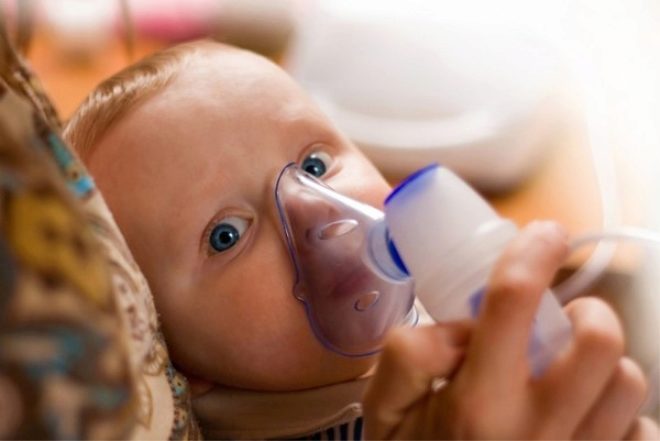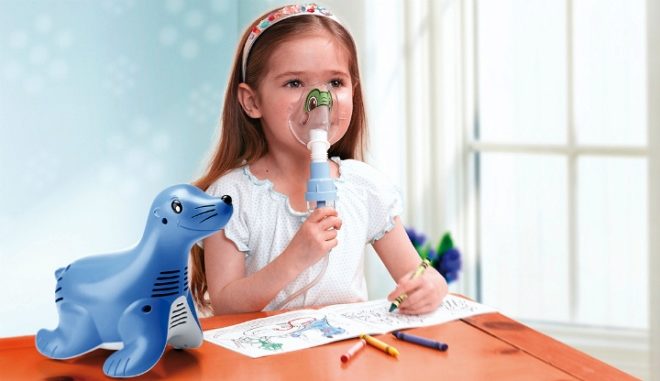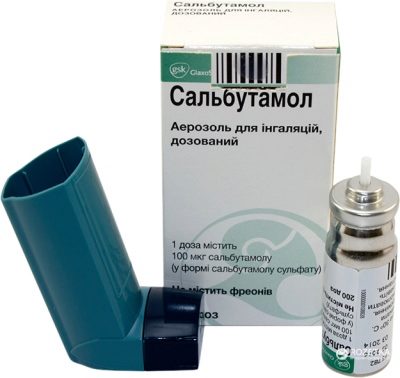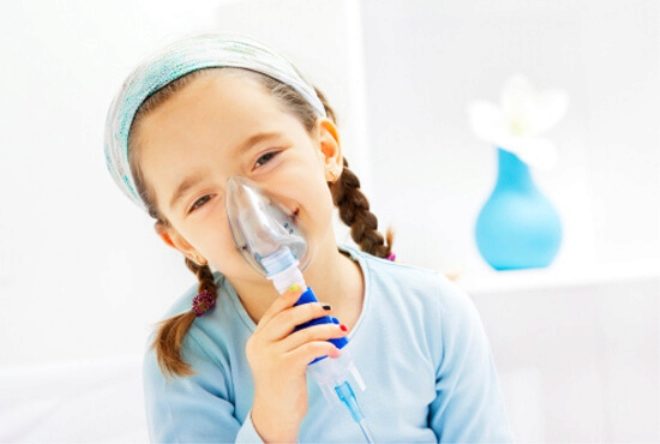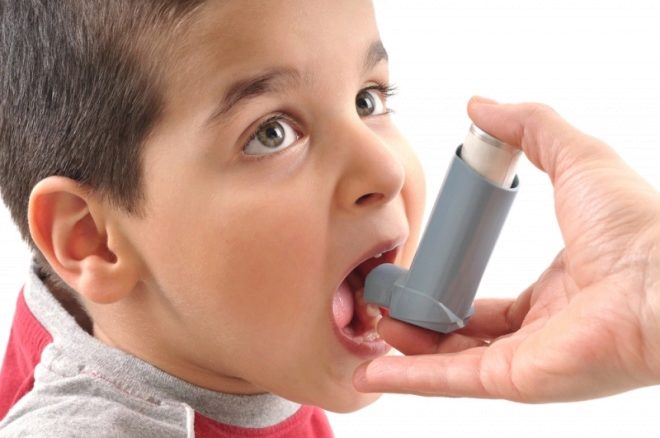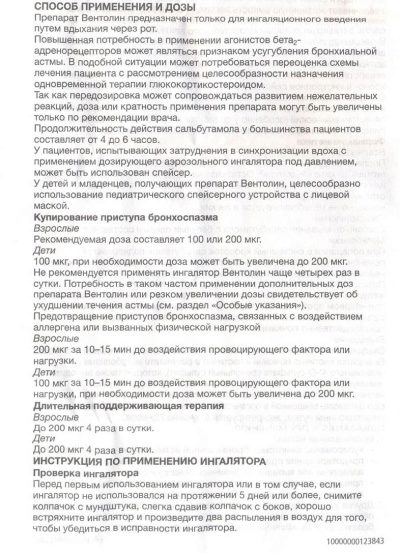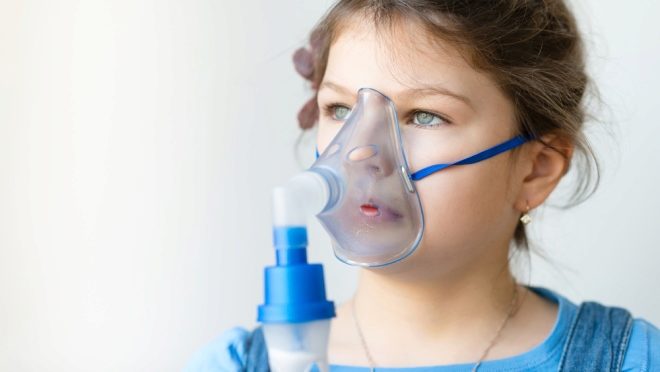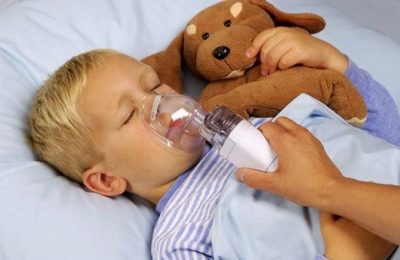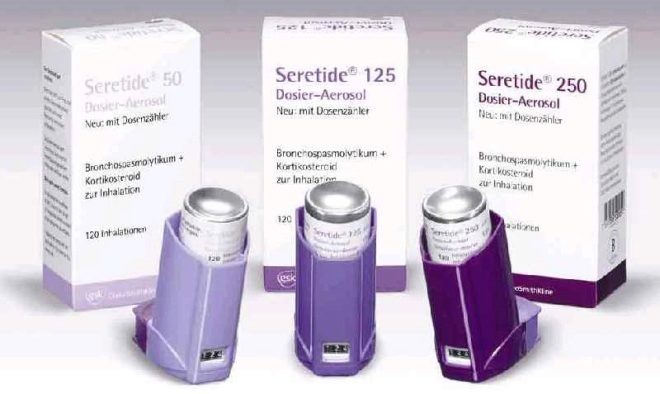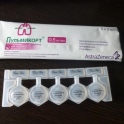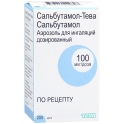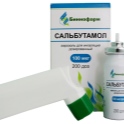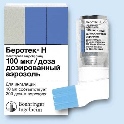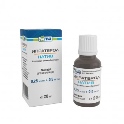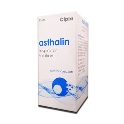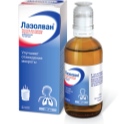Inhalations with Ventolin for children
To combat such a symptom as bronchospasm, medications are used that can relax the muscles of the bronchial tree and thereby facilitate breathing. One of them is Ventolin. Is such a drug permitted for children, when and how is it used in childhood?
Release form
Ventolin is produced in the form of a metered-dose aerosol used for inhalation. It is represented by an aluminum bottle, which has a plastic metering device and a protective cap. Inside this inhaler is a white suspension. One can of medicine contains 200 doses of the active substance.
There is another form of release of the drug, represented by a solution for inhalation. It is called Ventolin Nebula because the medicine is placed in polyethylene ampoules called nebulas. Each such ampoule contains 2.5 ml of a solution with an active ingredient concentration of 1 mg / 1 ml.
The difference between Ventolin and Ventolin Nebuly lies in the fact that the solution from nebulas is injected into the patient's airway using a nebulizer. To the dosage of such Ventolin prescribed by the doctor, if necessary, add a saline solution, and then for about 10 minutes the patient should breathe the drug through a nebulizer. In some cases, it is not necessary to dilute the drug, and inhalation lasts up to 5 minutes.
Composition
The main ingredient of Ventolin is salbutamol, represented by micronized salbutamol sulfate. Its amount is such that from one dose the patient receives 100 µg of salbumol. The only additional component of the drug is a propellant, due to which the active substance is pushed out of the balloon under pressure. This compound is tetrafluoroethane.
Operating principle
Salbutamol in the composition of Ventolin has a bronchodilating effect, since this component is able to activate beta2-adrenergic receptors. By binding to this type of receptor in the smooth muscles of the bronchi, it causes them to relax, with the result that the bronchi expand about 4-6 hours. The effect of the use of the inhaler occurs within five minutes after inhalation of salbutamol.
In addition to the expansion of the bronchi Ventolin contributes to:
- Reduced resistance in the respiratory tract.
- Increased lung capacity.
- Increased mucociliary clearance.
- Activation of ciliated epithelium in the bronchi.
- Stimulation of mucus production.
Since the drug selectively affects beta-2 receptors, its therapeutic doses do not increase blood pressure and do not adversely affect the work of the heart. At the same time, the use of an inhaler can slightly increase the frequency and strength of myocardial contractions, as well as expand the coronary arteries. Some metabolic effects, such as an increased risk of acidosis and hyperglycemia, and a decrease in the level of potassium in the blood, are noted in the drug.
Indications
Most often, Ventolin is discharged for bronchial asthma., because such medicine helps to prevent bronchospasm, and stop this symptom when it has already occurred. Such a drug can be one of the drugs used for long-term maintenance treatment of patients with bronchial asthma.
In addition, inhalations with Ventolin are used for other chronic pathologies in which there is a reversible obstruction of the respiratory tract, for example, in chronic bronchitis or emphysema.
Sometimes pediatricians prescribe this medication for laryngitis, however, many experts believe that such a disease and its complications (false croup) should not be treated with bronchodilator drugs, because they act on the bronchi, and with inflammation of the larynx are ineffective.
At what age is it allowed to take
Age limits for the use of Ventolin in children in the instructions for the inhaler are not marked. If there are indications for such medication, it can be used in a child of any age, but only after consulting a doctor. In this case, children younger than 2 years old are prescribed a drug very rarely and for a short course.
Contraindications
The drug is not used if the child revealed hypersensitivity to salbutamol or to the propellant. Increased attention from the doctor require children who have:
- Heart defects;
- Myocarditis;
- Tachyarrhythmia;
- Thyrotoxicosis;
- Arterial hypertension;
- Diabetes mellitus (especially with decompensation);
- Glaucoma;
- Pheochromocytoma.
Side effects
The use of Ventolin can provoke:
- The appearance of headaches;
- Irritation of the mucous membrane of the oropharynx;
- Palpitations;
- The appearance of tremor.
In rare cases, the drug causes allergies. (for example, urticaria or angioedema), hypokalemia, hyperactivity, heart rhythm disturbances, expansion of peripheral vessels or muscle cramps. In some patients, a paradoxical reaction is possible in inhalation of medication, in which bronchospasm increases.
Instructions for use
Ventolin is used exclusively for inhalation, during which the medicine is inhaled through the mouth. For young children, the medication is administered using a special device (it is called a spacer), which has a facial mask. When the inhaler is used for the first time or the last use of the medicine was more than five days ago, it is recommended to remove the cap, shake the can and make 2 sprays of the drug in the air.
For inhalation you need:
- Remove the cap.
- Check all parts of the cartridge and mouthpiece to make sure that there are no foreign objects.
- Shake the inhaler (it mixes its contents evenly).
- Holding the balloon vertically upside down, suggest that the child take the maximum exhalation.
- Place the mouthpiece into the mouth of the small patient and tell the child to embrace it with his lips, but not touch the teeth.
- During a deep breath, press the top of the can in order to get one dose of the medicine into the airways.
- Tell the child to hold his breath.
- Remove the mouthpiece from the mouth.
- If another dose is required, repeat all steps in 30 seconds.
- Close the tip cap.
Dosage
- A single dose for bronchospasm is 100 mcg of salbutamol, that is, a single dose of Ventolin. If required, a single dosage can be doubled, and the maximum frequency of use of the drug per day is 4 times.
- If Ventolin is used to prevent bronchospasm, then the drug should be inhaled 10-15 minutes before exercise or the influence of another provoking factor. A single dose is usually enough, that is, 100 μg of salbutamol, but, if necessary, it can be increased to 200 μg of the active compound.
- If the medication is prescribed as part of a maintenance treatment, then inhalation is carried out 4 times a day, and the dosage per application will be 100-200 μg of the active ingredient.
Overdose
Due to an excessively high dose of Ventolin, symptoms such as beta-adrenoceptor stimulation occur:
- Decreased blood pressure.
- Rapid pulse.
- Nausea.
- Shivering muscles.
- Vomiting.
A very high dose of the drug provokes hypokalemia, as well as metabolic acidosis.
Interaction with other drugs
- Ventolin should not be combined with blockers of beta-adrenergic receptors, for example, with propranolol.
- The drug can be used in the treatment of MAO inhibitors.
- If inhalations are given with simultaneous treatment of thyrotoxicosis, salbutamol increases the risk of tachycardia and a stimulating effect on the central nervous system.
- When used with xanthines, the likelihood of tachyarrhythmias increases.
- If you use Ventolin with anticholinergic drugs, this will increase the intraocular pressure.
- With simultaneous use with glucocorticoid drugs (for example, if Ventolin and Pulmicort are prescribed together) or diuretics, the risk of hypokalemia increases.
Terms of sale
To purchase Ventolin in a pharmacy, you must show a prescription from a doctor. The average price of an inhaler is 130-150 rubles.
Storage features
Keep a can at home should be at room temperature (up to +30 degrees), hiding it in a dark place where children will not find the drug. Do not freeze the medicine. Ventolin expiration date is 2 years. If the date marked on the package has passed, use of the inhaler in children is unacceptable.
Reviews
Ventolin is considered to be both doctors (among whom is Dr. Komarovsky) and parents as a very effective medicine that quickly helps with asthma. According to moms, the use of an inhaler for a few minutes relieves spasms and helps to eliminate an asthmatic attack. Praise the drug for ease of use, affordable cost and lack of taste.
Dr. Komarovsky will tell all about inhalations to children, including about inhalations on the basis of ventolin, in the next video.
Negative reviews of the drug are rare and are associated either with side effects that have arisen in the treatment process, or with inefficiency in severe lung disease. Some parents forget that Ventolin is only a symptomatic treatment of asthma, helping to get rid of bronchospasm, but does not relieve this disease completely.
Analogs
Ventolin replacement can be other drugs based on salbutamol, which are produced in the form of a metered aerosol, for example, Salbutamol, Salamol Eco, Salbutamol-Teva or Astalin. In addition, if necessary, the pediatrician may prescribe medications to the child with a similar effect, but with a different composition. It may be Berodual, Berotek, Seretid, Ipraterol-native or another medicine from the group of beta-adrenomimetics.
If a child has laryngitis or another upper respiratory tract disease with a strong dry cough, it is impractical to use Ventolin and it is better to consult a doctor to find effective means for such pathologies, for example, Lasolvan syrup or Pulmicort suspension.
